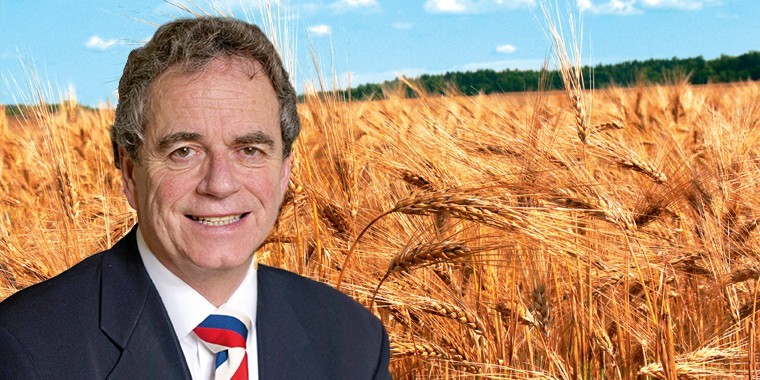The Australian met office is now predicting a 90% chance of El Niño being a significant event this summer, of the type seen once every 20 years or so. The usual effect is that either side of the Pacific and the South Atlantic, you have wet weather when you expect or need dry, and vice versa.
It was mostly El Niño concerns which sparked the massive buy back of Chicago wheat futures on 14 May. Two million tonnes of contracts were bought back on that day. For a while Chicago was up £10 per tonne with UK futures a more modest £4.
Since then, with some rain in Canada and Russia weather fears have subsided for now, and the markets have lost most of the gains. The hedge funds still remain dangerously short of futures wheat but have also begun to short maize and soya as well.
There are now many international fortunes invested in keeping these commodities under pressure, and pushing then lower if they can. There is evidence that having made a killing from being short, the same hedge funds have now returned to sell the market short again, at current low levels.
This may prove to be the bridge too far. This is where the algorithmic computer generated trading activity veers away from good old fashioned grain trading, dead reckoning and logic and actually bothering to go and look at some growing crops.
There has been almost no grain trade in the UK in the last month, except for old crop oilseed rape where weekly demand for seed to fulfill supply agreements has kept the market firm. Understandably, no one wishes to sell new crop; why bother to lock in a loss now on a crop which may never reach its full potential?
Equally why deny yourself the chance to cash in any of the potential weather events which could yet affect the southern hemisphere without causing us any problems. Notwithstanding the need for movement to create space at harvest time, I remain very friendly to oilseed rape and barley in the long term. There will be less oilseed rape produced in the world from next harvest. Both the UK and European Union production will be down, so will imports from non EU countries. The Australian surplus will only get as far as China and Canada has genetic modification issues.
Currency is a big problem as we have to change all or our pounds into euros to export to our biggest customer, the EU. We did get the forecast £/€ lift to 74p just before the election, but it’s under 71p just now. Clearly the Greek tragedy – in six acts with a long interval – still hangs over the euro. They are supposed to be finally sorting this on Friday 5 June. Some Greek sources say they have enough money to pay their next debt installment; others say they may have to issue a second currency (like a drachma) for internal use. But that really would be the beginning of the end.
If they stay in the EU the euro will strengthen to the UK’s benefit as an exporter: if they don’t, who knows. To emphasise the importance of currency, if we returned to the sterling/euro exchange rate of last September and ignoring any trade considerations, UK oilseed rape would be worth £300 per tonne.
Even the bearish United States Department of Agriculture have had to admit that in 2015/16 we will produce less barley than we will consume in the world, and stock will fall for the second year running. China needs to import 7.5 million tonnes; Saudi Arabia and other Middle Eastern countries need 6.5 million tonnes; the EU and the UK will supply a lot of this barley, and I would not be surprised if feed barley trades at a premium to feed wheat in the international market. So keeping feed barley off the cheap harvest market is what you must do.
For now, the bearish short hedge funds are choosing to ignore the elephant in the room El Niño. Of course there is always a certain amount of crying wolf over El Niño. But the evidence is compelling at this time.
Consumers, like farmers, are disinterested in buying forward, hoping to squeeze prices lower before they come in to buy. The last time all the consumers tried to cover at the bottom was last September, when feed wheat briefly went under £100. What happened? Within three weeks the price went up £20 as world logistics could not cope with the sudden demand.
So the stand off can go on for another month or two easily. Meantime end users are still having to buy June/July wheat to see them through to the first half of August. Hold onto this thought: usually old and new crop wheat values have to meet by harvest. November wheat futures are £10 more than old crop, so why shouldn’t old crop increase to meet the new crop price?




